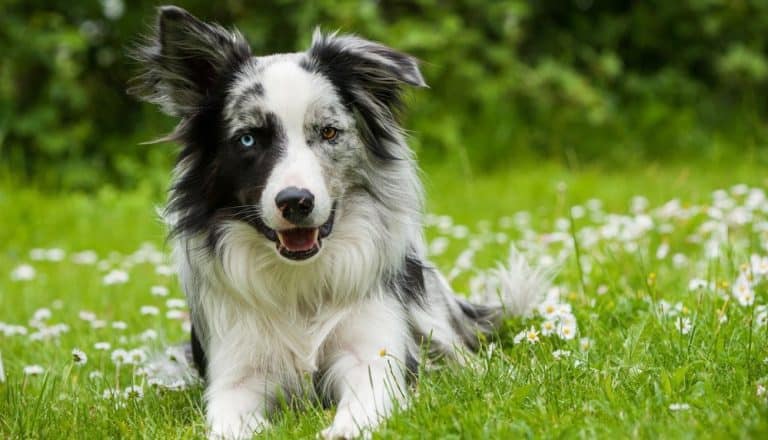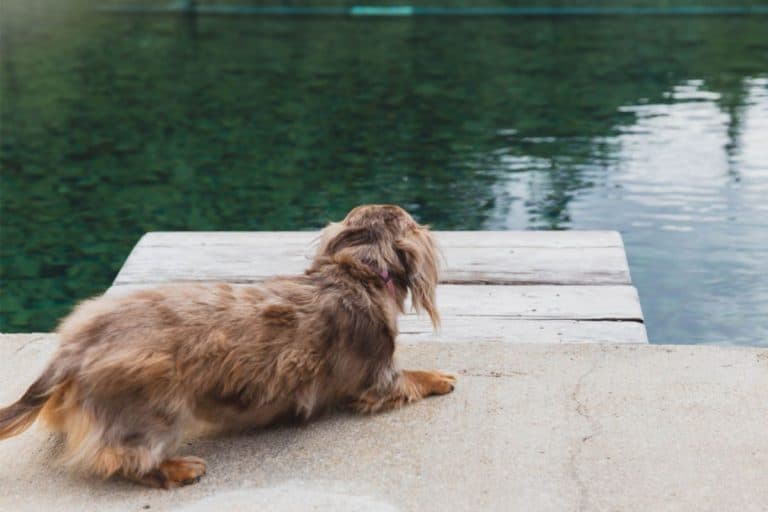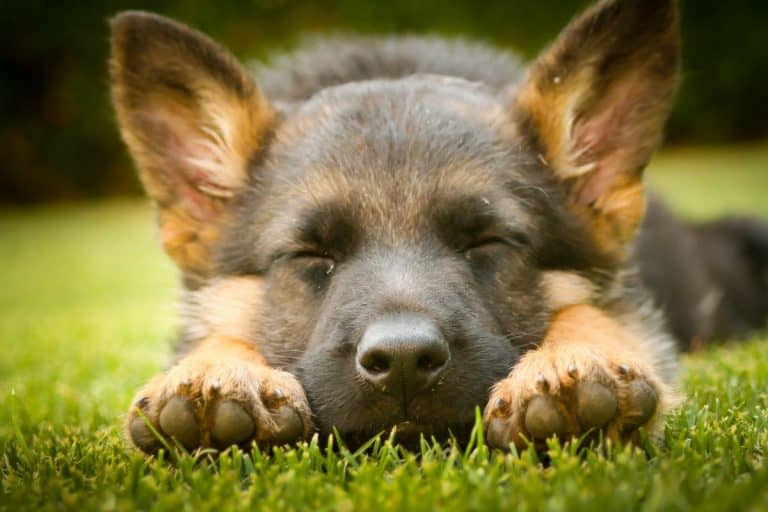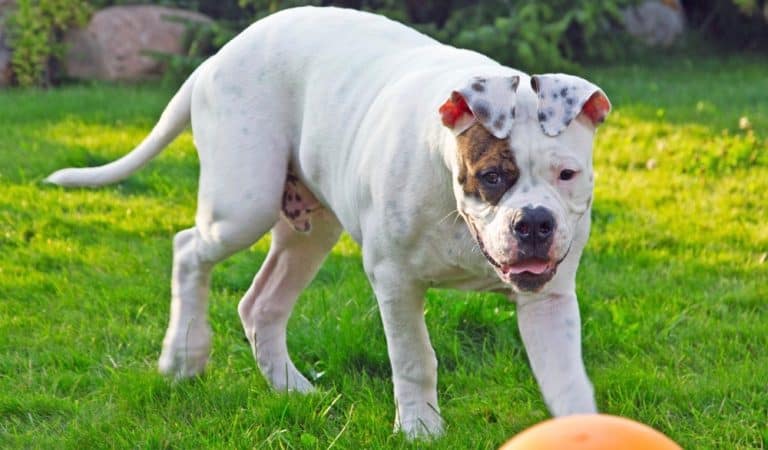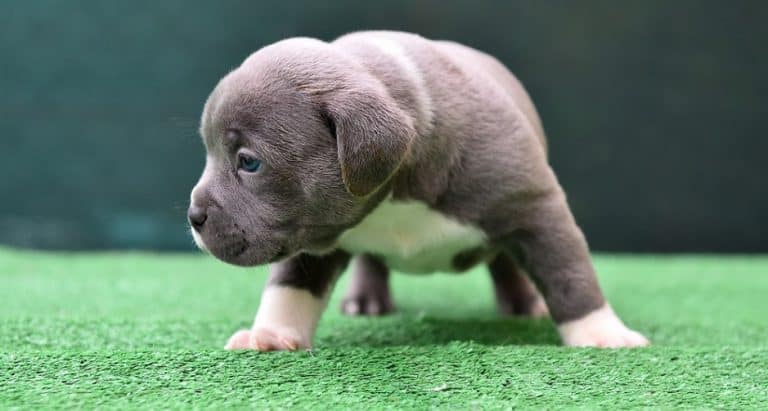Tiny Yet Mighty: A Look At All Dachshund Coat Types, Markings, And Colors
Dachshunds are a dog breed that has become increasingly popular in recent years, which is why it is so important to have an excellent working knowledge of the breed if you are considering bringing one home as a pet.
Whilst external appearances are far from an essential factor to consider when choosing a dog breed, it is still important to know as much as you can about the animal that you are hoping to bring into your family.
Knowing the types of coats of a dog is especially important, as then you will have more of an idea of how to manage it.
Color might not seem to be essential, but certain dachshund coat colors come with a higher possibility of health issues, so it is important to know exactly what coats can cause what problems and why.
With this in mind, we are going to be taking an in-depth look at all of the colors, coat types, and markings that it is possible to have with a dachshund. Let’s get started.
The History Of The Dachshund
Before we get started, let’s begin with a bit of history on this particular dog breed.
Originating in Germany in the 1600s, the Dachshund- otherwise known as the “weiner” or “sausage” dog thanks to their long, low bodies- were dogs that were bred to hunt animals that lived in burrows, such as rabbits or badgers.
The name “dachshund” literally translates to “badger dog”, though the breed was often used to hunt animals that were much bigger too, such as wild boars.
That aforementioned sausage-like body shape along with their long tails and flopping ears made them perfect for subterranean hunting.
In fact, the breed was bred with these features specifically so that they could be hunters, although earlier dachshunds had shorter ears as well as longer legs.
Although dachshunds have mostly become house pets, they still retain some of that hunting prowess when it comes to small animals.
Dachshund Coat Types
There are three types of coats that dachshunds can have: wire-haired, short-haired, and long-haired.
Wire-Haired
The wiriness of the coat itself is caused by their thick double coat, consisting of a downy and soft undercoat with a coarse and thick overcoat.
This is what creates that wiry appearance, but it also means that they are the highest maintenance out of the three types of dachshund coats.
The wiry nature of this kind of coat also creates a distinctive look for a dachshund, thanks to the coarseness.
The hair around the eyes and chin of the dog can look like a set of bushy eyebrows and a bushy beard!
In terms of shedding, wire-coated dachshunds tend to be low shedders, making them a great choice for those who suffer from allergies.
However, this does mean that their grooming needs are more complex.
It is important to know the grooming needs of your dog no matter what breed they are, and knowing their coat type is essential when it comes to this.
For the wire-haired dachshund, the grooming needs are a bit different to the usual grooming needs.
Rather than regular grooming, the coat should instead be stripped around three times every year, as this will remove the dead fur from the undercoat of the dog. By removing this undercoat, the fur can regrow in a healthy manner.
The process of stripping a dog’s coat relates to pulling out the dead hair, as mentioned.
This is necessary when the coat is particularly thick, as dead fur often gets trapped underneath.
As well as the stripping of the coat, you should also make sure that you brush through the dog’s wiry coat at least once a week, as this will ensure that knotting and matting are avoided.
Some wire-haired dachshunds can have a coat that is more on the fluffy side rather than coarse and in this situation, the dog might not need to be stripped at all thanks to the softness of the fluffy coat keeping away the dead fur rather than trapping it as the coarse hair tends to.
Make sure that you speak to a professional dog groomer if you are ever unsure as to whether your wire-haired dachshund needs to have their coat stripped or not.
Tips For Grooming A Wire-Haired Dachshund
- Make sure that you don’t brush too hard, even for those with a particularly coarse coat, in which debris and dirt can get easily trapped.
- Find a brush with good bristles for regular brushing and a wire-pinned brush for stripping the coat.
- Use a comb or your fingers to remove any tangles to avoid causing unnecessary pain to your pup.
- If the bushy hair on the dog’s face gets too long, give it a trim.
- Keep bathing to a minimum, as they should only need it a few times a year.
Short Haired
There is a frequent misconception surrounding smooth-coated dachshunds, that being that they do not shed.
This is not the case, as smooth coated dachshunds do indeed shed. That being said, they aren’t about to start shedding hugely thick clumps of hair all over the place.
Instead, this kind of coat is prone to shedding fine, short hairs that can easily get stuck on furniture or on clothing.
In order to deal with the shedding with this coat, you will need to brush your smooth coated dachshund once a week at the very least. This will become even more important when the seasons begin to change.
In order to get all of the dirt, debris, and loose hair off of their coat in the most effective way possible, use a bristle brush or a soft, slicker brush.
This will also keep the shedding under control. You won’t need a comb for a short haired dachshund either, only a brush.
Whilst intense grooming isn’t necessary, the basics still need to be covered in order to keep your dachshund healthy and happy, such as cleaning the ears, trimming the nails, and brushing the teeth.
Tips For Grooming A Short-Haired Dachshund
- Bathe them only when absolutely necessary
- Don’t shave off their coats and don’t trim them either, as it shouldn’t be necessary with their shorter coat.
- A rubber glove brush can be handy when grooming this kind of coat
- When removing loose fur, a soft-bristled brush is your best option.
Long Haired
Their grooming needs are certainly more advanced- like the wire-haired- but their needs are very much different.
The long-haired dachshund has a coat that is almost the opposite of the wire-haired kind in that it is flowing, long, silky, and very soft.
This flowing nature means that it will need to be brushed much more regularly so that you can keep it clean and fluffy, as it will be prone to picking up a lot of debris and dirt, particularly when out and about on walks or spending time outside in general.
Brushing will effectively remove both tangles and dirt from the coat, but make sure that you put some extra focus on the feet and the ears, as these areas tend to get tangled up the most with long-haired dachshunds.
Although trimming is essential, frequent full-blown haircuts are not necessary for a long-haired dachshund.
The areas that it is best to focus on when trimming is around the tail, ears and paws, but make sure that you don’t shave their coat completely, even in the hot weather.
A dog’s coat is essential to ensure that they are able to maintain an efficient body temperature when it comes to extreme weather conditions.
When you are ready to give your long haired dachshund a trim, begin by bathing them beforehand.
Clippers or small shears are suitable when you begin trimming, though you will want to use the shears for more precise trimming.
You can also opt for round tipped scissors as well, which are safe to use and useful for getting hard to reach areas.
As mentioned, shaving your dog’s coat is not needed, but trimming it should be fine.
If you do want to trim your dachshund, make sure that you use thinning shears, as these will only thin out the top layer of the coat rather than remove it completely.
Once you have used the thinning shears, brush the dog’s coat out afterward so that any loose hair is able to be removed.
When brushing, make sure that you do so in the natural direction of the coat so that you get the best results possible.
Tips For Grooming A Long Haired Dachshund
- Remove any mats or tangles from their fur with a comb or your fingers before beginning the grooming
If you think you might have missed some tangles, make sure to separate the long lair of the coat with sectioning clips as you groom. - Use bristle brushes or pin brushes, as these are the most effective for long haired dachshunds.
- Remember, trim but don’t shave!
- Much like with wire-haired coats and short coats, consult a professional groomer if you are ever unsure of anything related to the maintenance of your dachshunds coat.
Dachshund Colors, Markings And Patterns
Now that we have looked at the different coat types that it is possible for a dachshund to have, let’s now take a look at the colors and markings that the breed can have.
There are three different kinds of colors when it comes to a dachshunds coat: single colors, double colors or patterned.
The names are pretty self-explanatory, but let’s go through them anyway, so you know exactly what to look for with dachshund coat colors.
- Single: One, solid coat color.
- Double: Two colors mixed together throughout the dog’s coat.
- Patterned: Different patterns within the coat, which can be a variety of different colors.
There are around thirty different variations of colors for dachshunds, all of which come under one of those three classifications.
These colors are determined by the genetics of the dog, though this does mean that some colors of dachshund are more prone to health issues than others (more on that as we go through all of the color and pattern variations).
First off, take a look at our comprehensive list of all of the available coat colors and patterns that the dachshund can have, including whether this is a single color, a double color or a patterned.
- Albino: Single Color
- Black: Single Color
- Black and Tan: Double Color
- Black and Tan Piebald: Patterned
- Black and Cream: Double Color
- Blue: Single Color
- Blue and Cream: Double Color
- Blue and Tan: Double Color
- Blue and Tan Dapple: Double Color
- Blue Dapple: Patterned
- Brindle: Patterned
- Brindle Piebald: Patterned
- Chocolate: Single Color
- Chocolate Dapple: Patterned
- Chocolate and Tan: Double
- Chocolate and Cream: Double Color
- Cream: Single Color
- Double Dapple: Patterned
- English Cream: Single Color
- Fawn/Isabella: Single Color
- Fawn/Isabella and Tan: Double Color
- Piebald: Patterned
- Red: Single Color
- Red Sable: Patterned
- Red Dapple: Patterned
- Shaded Red: Single Color
- Shaded Cream: Single Color
- Wild Boar: Double Color
- Wheaten: Single Color
- White: Single Color
- Let’s now take a more in depth look into each of these colors and patterns.
Albino
There are both full albino and partial albino dachshunds, with the partially albino dogs having some small patches of either brown or black on their white coats.
Albino dachshunds are often mistaken for white dogs, but pure white dachshunds will have dark noses and eye rims.
Albino dachshunds are the same as other dog breeds with albinism in that there are certain health issues that they are more prone to, such as weaker immune systems, deafness, sunlight sensitivity, skin issues, neurological issues and eye sensitivity.
Black
Black And Tan
These markings can be found on the paws, the muzzle, the legs and the chest as well as the eyebrows.
The tan color here is often quite dark and has an intensity to the color that gives it a red like hue.
Black And Tan Piebald
A base coat of black and tan is combined with large white patches with this coat coloring, with the white patches tending to cover the belly and the chest area. The patches of white can also have black dots scattered throughout.
This coat color can also affect the nails of the dog too, with some black and tan piebalds having all white nails or a mixture of black and white nails.
They can also have bits of white dotted around predominately black and tan areas of their coats. For example, they might have a black tail that has a white tip on the end.
Piebald is thought to be a color by many, but it is a pattern that is caused by a recessive gene within the dachshunds DNA.
It is imperative that you always discuss the health of a dachshund puppy with a fair amount of white in their coat with a veterinarian or the seller if you purchase the pup, as the white, recessive gene has been linked to various health problems, such as blindness and deafness.
Black And Cream
The markings also appear in the same places as the black and tan coloring: on the legs, paws, chest, eyebrows and muzzle.
Blue
However, what we mean when we say that a dog has a blue colored coat is that their coat is a shade of black that has been diluted to create a steely gray, blueish tone.
Blue is another rare coat color that is caused by a dilution gene that is recessive. It is important to know that this gene is responsible for causing skin problems in dachshunds, such as alopecia.
Alopecia can lead to dry and flaky skin as well as hair loss for dogs. Dachshunds with a blue coat are also unable to create any black pigmentation due to their genes.
Blue And Cream
Though not as popular as the black and cream coat, blue and cream coats features the same cream shade that can vary from light cream to golden cream.
Blue And Tan
This is another rare color, with the black and tan coat being much more popular.
Blue And Tan Dapple
With a blue and tan dappled coat, the blue gray base coat will be covered with speckles and will feature tan markings in the usual areas.
The light gray coloring of the speckles is also known as lavender blue, depending on how light or dark the tone is.
Blue Dapple
The dapples on top of the coat are caused by the aforementioned recessive dilution gene, which causes a random variation of blotches, speckles and patches.
An interesting fact about this coat color is that the dachshund can have one brown eye and one blue eye, or pure blue eyes.
Brindle
Brindle refers to a distinctive pattern made up of black or dark brown stripes on top of a tan or reddish brown base coat, which gives these dachshunds a look that is a bit similar to that of a tiger’s coat!
Even one stripe can qualify a dachshund as a brindle.
Brindle Piebald
Much like other piebalds, brindle piebalds will also be prone to white nails and white tail tips.
Chocolate
Chocolate coats are recessive and feature only a small amount of eumelanin, which refers to a dark melanin pigment within the genes.
A larger amount of eumelanin leads to a black coat rather than a dark brown one, which is why the color is so rare.
Chocolate Dapple
As with other dachshunds that have dapple coats, these pups also have a penchant for having different colored eyes, such as one brown and one blue or heterochromatic eyes.
Chocolate And Tan
Chocolate And Cream
It can be easy to confuse chocolate and cream dachshunds for chocolate and tan ones, but chocolate and cream coated dachshunds tend to have lighter markings.
Cream
There are two different types of cream coats: the American cream and the English cream.
We will talk about the English cream in a moment, but when it comes to the American cream, they can have either long or short haired coats.
Double Dapple
This pattern can occur when a puppy is born from two dapple dachshunds. Double dapples tend to have a lot of white markings, most of which will be present on the nose, the tip of the tail, the paws and even as a band around the neck.
Each pattern will vary from dog to dog, but the markings will usually be in the form of spotting over white patches or multicolored patterning.
Many double dapples have blue eyes, though some will have just the one blue eye. The blue color of the eyes is caused by the same gene that removes the pigment from the coat.
Double dapple coats should not be bred in dachshunds due to the serious health problems that can occur thanks to the combination of the dapple genes.
Many of these issues relate to the eyes and the ears, such as malformed or abnormal eyes or deformed or missing ears.
Partial and complete blindness and deafness is also possible, though not completely guaranteed with each double dapple.
That being said, health issues related to genes occur in around 25% of double dapples, including a significant risk of congenital eye defects.
English Cream
The major difference between English and American creams is that English creams will only have a long coat.
This coat will often be somewhat wavy and very soft as well as longer on the legs, the chest, the ears and the belly.
As well as this coat length and style, English creams can also be differentiated from American creams by the undertones in the coat.
American creams have reddish brownish undertones whilst English creams have a light blonde/ white tone.
The color at birth of both types of cream coated dachshund also differs, with English creams being black at birth and lightening in color as they age and American creams being born close to a white color.
Fawn/Isabella
This unique coat color will come about when both parents of a fawn puppy have the gene that dilutes the pigment. This gene will dilute chocolate brown and cause it to become isabella.
Isabella is usually an expensive color of puppy to have in dog breeds due to its rarity, but it can also be one that causes health issues similar to blue dachshunds, such as skin problems and hair loss.
Fawn/Isabella And Tan
The faded gray brown is combined with tan markings. Despite being more common, this is still a coat color that is not as popular as black and tan, cream and tan or even blue and tan.
Piebald
This combination of different colors with white patches will vary. You might have a piebald dachshund that is mostly white with only little bits of color here and there, or one that has only got small patches of white.
Piebalds are another color that are prone to health issues, though- such as deafness and blindness- so keep that in mind and make sure that you have a piebald dachshund vet checked as soon as you can.
Red
Red refers to a rust-like deep shade of brown, similar to the red color that is associated with foxes.
This red color is more common in dachshunds, as one copy of the dominant red gene is all that is needed to create the coat shade.
Red Sable
The red of the coat is a little darker than the solid red, in that it is so deep that it almost comes off as a crimson color.
Sable dachshunds don’t tend to have as many health issues related to them as some of the other colors of dachshund.
Red Dapple
With red dapples, these patterns tend to be a light pinky red or diluted light brown. As with other dapples, red dapple dachshunds can also have multicolored eyes.
Shaded Red
The main difference between shaded red coats and red sable coats is that with shaded red, the black tips are usually on the entirety of the tail or the ears.
With red sables, the black tips are able to appear anywhere on the coat.
Shaded Cream
Wild Boar
This is an interesting coat color as there tends to be bands of different colors throughout the coat, usually consisting of a mixture of browns, grays and blacks.
Wild boar coat colors also tend to feature cream or tan markings on the legs, eyebrows and the muzzle.
This is a popular color for wire-haired dachshunds, but is otherwise quite rare.
Wheaten
This creates a coat that has a similar color to that of wheat, hence why it is named as such.
This is another coat color that is pretty rare and was once only seen in wire-haired dachshunds.
Breeding has led to the color becoming more common in long haired and short haired dachshunds too, though it is still a rare color to be had in this breed.
Whetens also have a tendency to be confused with cream dachshunds due to the blonde nature of the coat.
However, wheatens are often darker thanks to the mixture of brown with the light gold.
White
A white dachshund will have either a dark brown or black nose, along with brown or black eyes and paw pads.
White dachshunds are another color that are not recognized in the United States or the United Kingdom under the kennel club standards due to the underlying health issues and questionable ancestry associated with the color.
Some of the health issues that white dachshunds might be prone to include auditory defects, blindness or microphtlamia.
Final Thoughts On Dachshund Coat Styles Colorings, Markings And Patterns
So there you have everything that you need to know about dachshunds and their coats, including the three styles of coat along with the available colors, patterns and markings.
Let’s go over some of the key takeaways that should help you on your way to knowing which kind of dachshund you might want as a pet.
The three different types of coats for a dachshund- long haired, short haired, and wired haired- all have varying levels of grooming needs, with the wired hair being the most specialized, the short haired being the lowest maintenance and the long haired being the highest maintenance.
If you still find yourself unsure of how to manage your dachshunds coat, make sure to find a reputable groomer and write down a list of all of your questions and queries before you visit.
In terms of colors, patterns and markings on the coat, dachshunds are available in either solid, single colors- such as red or cream- double, solid colors- like black and tan or chocolate and cream- or as patterned coats, such as dappled red or piebald.
Color in general refers to the main hue of the coat and whilst the singular, solid color will act as the base coat- even with patterned breeds- these colors can actually be a mixture of two colors.
Patterns can lead to dachshunds appearing to be multi hued- especially when it comes to dogs with particularly diverse pattern styles in their coats- but patterned dachshund coats still only have the one base coat color.
Some of these colors, markings and patterns are rarer than others, but some are also linked to a significant increase in the risk of health issues for your dachshund due to the breeding that is done to create these colors leading to a build up of certain genes that cause problems.
Health issues can range from alopecia, skin issues and hair loss to auditory defects and even blindness.
If you wish to have a dachshund with a coat that is more prone to health issues, have a chat with your vet to ensure that they are in the best possible health.
You should now have all of the knowledge that you need to not only maintain a dachshunds coat and keep it healthy, but also to decide what coat color or pattern you would want from your dachshunds coat.
Here’s to many healthy and happy years to you and your dachshund companion!


